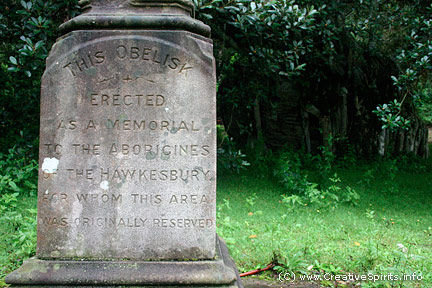History
Timeline results for 1770 to 1899
Found 112 results for your search. Showing page 1 of 6.
Year from 1770, year to 1899
1770
-
Captain James Cook claims possession of the whole east coast of Australia for the British Crown on Possession Island, a small island in the Torres Strait Islands. Many history classes and books start teaching Australian history from this point on.
-
The Guugu Yimithirr people and Captain James Cook clash over a dozen sea turtles that Cook's party caught for food near present-day Cooktown. Later, an Elder approaches Cook, offering a broken spear as a gesture of reconciliation and the two parties settle their dispute. The National Trust of Australia nominated the event as Australia's first documented act of reconciliation. Because the area where the two parties met is rocky it is now known as Reconciliation Rocks.
1788
-
Captain Phillip estimates an Aboriginal population of 1,500 people living in the Sydney Region. The total Aboriginal population is believed to be between 750,000 and 1 million. [1]
-
Captain Arthur Phillip raises the Union Jack at Sydney Cove to start a penal colony (and not a nation). Aboriginal resistance flares within a few days of arrival of the tall ships.
-
The first conflict between the First Fleet arrivals and Aboriginal people takes place near Rushcutters Bay, Sydney. Two convicts are killed.
-
Arabanoo is the first Aboriginal person captured by Europeans.
1789
-
A catastrophic smallpox epidemic decimates the Eora Aboriginal people of Port Jackson, Botany Bay and Broken Bay.
-
Governor Phillip captures two Aboriginal men - Bennelong and Colebee. Colebee escapes but Bennelong is kept at Government House for five months.
1790
-
The Hawkesbury and Nepean Wars between Aboriginal people and white invaders start in NSW. Led by Pemulwuy and his son Tedbury, Aboriginal people raid stations or assault sheep and cattle because the growing number of colonists occupied more and more land. Many times they used firesticks to set the bush on fire, destroy buildings, and burn crops. The guerrillia-like wars continue until 1816.

Aboriginal obelisk near the Hawkesbury River. It commemorates the Aboriginal people who occupied this area before they were wiped out by the white invaders. -
Pemulwuy spears Phillip’s gamekeeper, John McEntire, and Phillip orders the first punitive expedition.
1791
-
Orphan boy Bon-del is the first Aboriginal person to go to sea, sailing aboard the brig Supply, bound for Norfolk Island.
1792
-
Bennelong and a boy named Yemmerrawanie are taken to England by Phillip. They perform the first Aboriginal song to be heard in Europe. Bennelong meets George III. Yemmarrawanie dies in England. In 1795 Bennelong returns to Australia.
1793
-
Gnung-a Gnung-a Murremurgan (also known as Collins) crosses the Pacific to Nootka Sound (Vancouver), the Californian coast and Hawaii.
1795
-
The Richmond Hill battle is considered to be the first recorded battle between Aboriginal people defending their country against the British.
-
Aboriginal man Tom Rowley sails to Calcutta, Madras and New Ireland. He returns in 1796 to Australia.
1796
-
After being shot seriously twice, and surviving both times, Pemulwuy is considered unable to be killed by bullets.
1799
-
Beginning of a six-year period of resistance to white settlement by Aboriginal people in the Hawkesbury and Parramatta areas. Known as the ‘Black Wars’.
1801
-
Governor King orders Aboriginal people gathering around Parramatta, Georges River and Prospect Hill “to be driven back from the settler’s habitation by firing at them”.
1802
-
Pemulwuy is shot by two settlers. Tedbury continues the resistance.
-
Bungaree (Bungary) is the first Aboriginal person to circumnavigate Australia as a member of Matthew Flinders’ historic journey of exploration (1802-03). Bungaree is one of the very few Aboriginal people whose exploits have been documented in newspapers, journals and books of early colonial Sydney. Bungaree died in 1830 and was buried at Rose Bay, NSW.
References
View article sources (1)
[1]
'Rock art shows early contact', Sun Herald 18/7/2010
